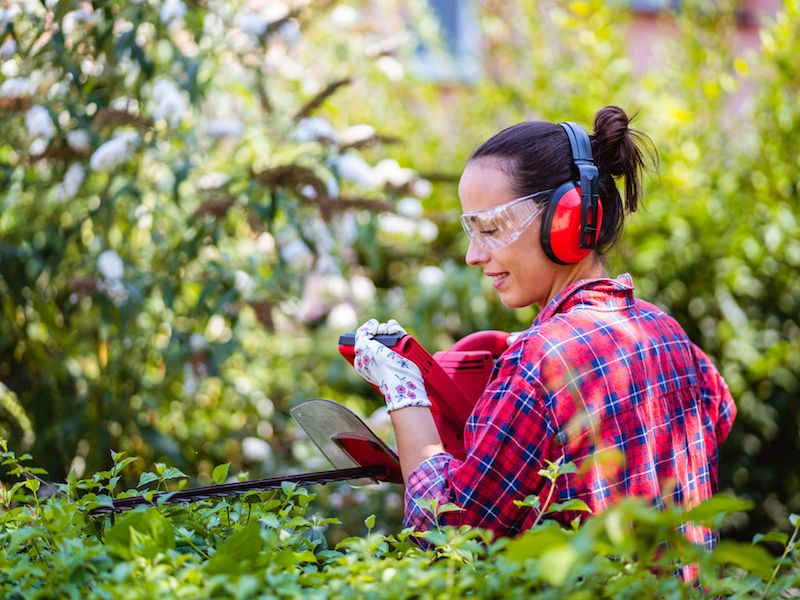
Eating right and safeguarding your hearing have some parallels. It sounds good, but not many of us have a very good concept of where to begin. This is especially true if you don’t think your daily environment is especially noisy and there aren’t any noticeable risks to your ears. But day-to-day life can put stress on your ears and your senses, so practicing these hearing protection techniques can help safeguard your auditory acuity.
The more you can do to slow down the impairment of your hearing, the longer you’ll be capable of enjoying the sounds around you.
Tip 1: Ear Protection You Can Wear
Using ear protection is the most practical and basic way to safeguard your hearing. This means taking basic steps to lessen the amount of loud and harmful noises you’re subjected to.
This means that when it’s required most people will want to use hearing protection. Hearing protection normally comes in two basic forms:
- Ear Plugs, which are placed in the ear canal.
- Ear Muffs, which are put over the ears.
Neither form of hearing protection is inherently better than the other. There are advantages to each type. Your choice of hearing protection should, most importantly, feel comfortable.
Tip 2: Be Aware When Sound Gets Dangerous
But how can you tell when to wear hearing protection? Noise that is painful is commonly regarded as harmful. But honestly, noises can begin to damage your ears at a much lower volume than you might expect. The sounds of traffic, as an example, are loud enough to begin damaging your hearing after just a couple of hours. Recognizing when sound becomes harmful, then, is a necessary step in safeguarding your hearing.
The following threshold is when sound becomes hazardous:
- Over 100 dB: This is where you can injure your hearing very quickly. Anything over this threshold can damage your hearing in minutes or seconds. Rock concerts and jet engines, for example, can injure your ears in around thirty seconds.
- 85 decibels (dB): This level of sound is dangerous after roughly two hours of exposure. This is the volume of sound you’d expect from a busy city street or your hairdryer.
- 95-100 dB: This is about the noise level you’d expect from farm equipment or the typical volume of your earbuds. This volume of sound becomes damaging after 15-20 minutes.
Tip 3: Make Your Phone Into a Sound Meter
We can take steps to limit our exposure, now that we have a concept of what volumes will be harmful. The trick is that, once you’re out and about in the real world, it can be difficult to measure what’s loud and what isn’t.
Your smartphone can now be used as a handy little tool. Sound meter apps exist for every type of smartphone.
Having a live sound meter with you will help you evaluate everything you’re hearing in decibels, so you’ll have a far better understanding of what harmful levels really sound like in your daily life.
Tip 4: Keep Track of Your Volume Settings
A smartphone with earbuds is commonly the way people listen to music these days. This sets up a risky situation for your hearing. Your hearing can be considerably harmed if you set your earbuds to high over a long period of time.
So keeping an eye on the volume control means safeguarding your ears. You should not raise the volume in order to drown out noises elsewhere. in order to make certain that volume doesn’t get too high, we suggest using volume configurations or app settings.
If your hearing begins to decline, earbuds can become something of a negative feedback loop; you could find yourself constantly raising the volume of your earbuds so that you can make up for your declining hearing, doing more damage to your ears in the process.
Tip 5: Have Your Hearing Tested
You might think of a hearing exam as something you schedule when your hearing has already started to diminish. Without a baseline to compare results to, it’s not always easy to identify a problem in your ears.
Scheduling a hearing screening or exam is a good way to come up with data that can be used for both treatment and diagnostic purposes, making certain that all of your future hearing (and hearing protection) choices have a little bit of added context and information.
Pay Attention to Your Hearing
It would be ideal if you could constantly safeguard your hearing without any hassles. But challenges are will always be there. So protect your hearing when you can, as often as you can. Also, get routine hearing exams. Hopefully, these guidelines will help you get a good start.
